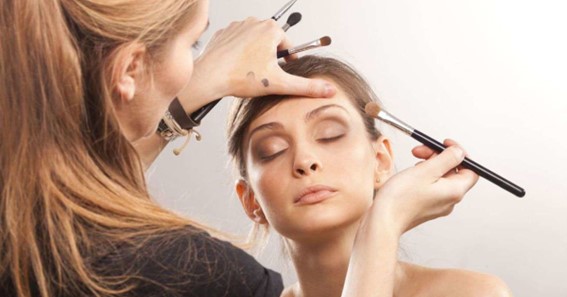Introduction
Photography makeup is a dynamic world where beauty, creativity, and technology converge. It goes beyond the daily use of cosmetics. It is a specialized area that requires expertise and an understanding of lighting, perspective, and high-resolution imagery. This article delves deep into this unique art form, providing valuable insights for makeup enthusiasts, photographers, and aspiring makeup artists.
The Importance of Photography Makeup
Photography makeup aims to highlight the subject’s best features and conceal imperfections. It can significantly influence how the subject’s face will appear on camera and affect the overall outcome of the photoshoot. A proper application can withstand long hours under different lighting conditions, offering durability and flexibility during shoots.
Difference Between Daily Makeup and Photography Makeup
Regular makeup is often softer and subtler. It focuses on enhancing your natural features and tends to be more forgiving. On the other hand, photography makeup requires a heavier hand due to the influence of light, angles, and high-definition lenses.
A properly applied makeup for a photoshoot can create a powerful visual impact and transform how subjects are perceived through the lens.
Crucial Tips for Photography Makeup
Photography makeup requires some specific techniques to ensure the results are picture-perfect. Here are a few crucial tips to guide you through the process.
Understanding Lighting Conditions
Different lighting conditions can dramatically affect the appearance of the makeup in a photograph. For example, soft, natural light tends to be more forgiving, while harsh or artificial lighting can accentuate skin imperfections. It’s essential to understand the lighting conditions in which the photoshoot will take place and adjust the makeup application accordingly.
Using a Primer
Primer is a must for photography makeup. It helps to create a smooth canvas by reducing the appearance of pores and fine lines. Primer also increases the longevity of the makeup, ensuring it stays intact throughout the photoshoot.
Click Here – Audiology Clinic: Caring for Your Hearing Health
Matte is Key
Products with a matte finish are generally recommended for photography makeup. They help to reduce the shiny appearance that can be amplified under photographic lighting. Remember to focus on areas such as the forehead, nose, and chin, which produce more oil.
Correct and Conceal
Corrective concealer is your best friend when it comes to photography makeup. It helps to cover any skin imperfections such as dark circles, blemishes, or redness that might be highlighted in the photographs.
Eye Makeup
Eye makeup should be more dramatic in photoshoots. Define your eyes by applying a thicker liner and a couple of coats of volumizing mascara. Remember to fill in the eyebrows as they frame your face and add depth to your expression.
Contour and Highlight
Contouring and highlighting are essential to photography makeup. They help define the facial structure and add a depth that two-dimensional images often lack. Be careful not to overdo it, as it can look unnatural under certain lighting conditions.
Lips
Choose lip colours that complement the overall makeup look and the subject’s skin tone. Avoid overly glossy or sparkly lip products, as they can create undesirable glare in photographs.
Setting the Makeup
Finally, ensure the makeup lasts through the session using a powder or setting spray. It prevents smudging or fading, helping to maintain a consistent look throughout the shoot.
Advanced Techniques for Photography Makeup
Mastering the essential tips can significantly enhance the quality of makeup in photography. However, integrating advanced techniques can take your skills to the next level.
Colour Correcting
Understanding the colour wheel is critical to effectively using colour correction techniques. Green counteracts redness, yellow neutralizes purple, and orange combats blue. Use these principles to offset any discolouration before applying the foundation.
HD Makeup
High Definition or HD makeup products are designed specifically for photography and filming. They contain light-reflecting particles that create an illusion of smooth, flawless skin. They also have a lighter texture which doesn’t feel heavy on the skin, making them ideal for long photoshoots.
Airbrush Makeup
Airbrush makeup is another advanced technique often used in professional photo shoots. It uses a small airbrush machine to spray a fine makeup mist, creating a smooth and flawless finish that lasts up to 24 hours. This technique requires specialized equipment and a certain skill level, but the results can be phenomenal.
Conclusion
Photography makeup is an art form that requires both skill and creativity. Understanding the basics of lighting, using the right products, and mastering advanced techniques can significantly improve the makeup’s look and durability under the lens. Whether you’re a professional makeup artist or an enthusiast aiming to improve your photography makeup skills, these tips and techniques will guide your journey. Remember, practice is critical, and with time, you’ll create stunning looks that truly shine through the lens.

